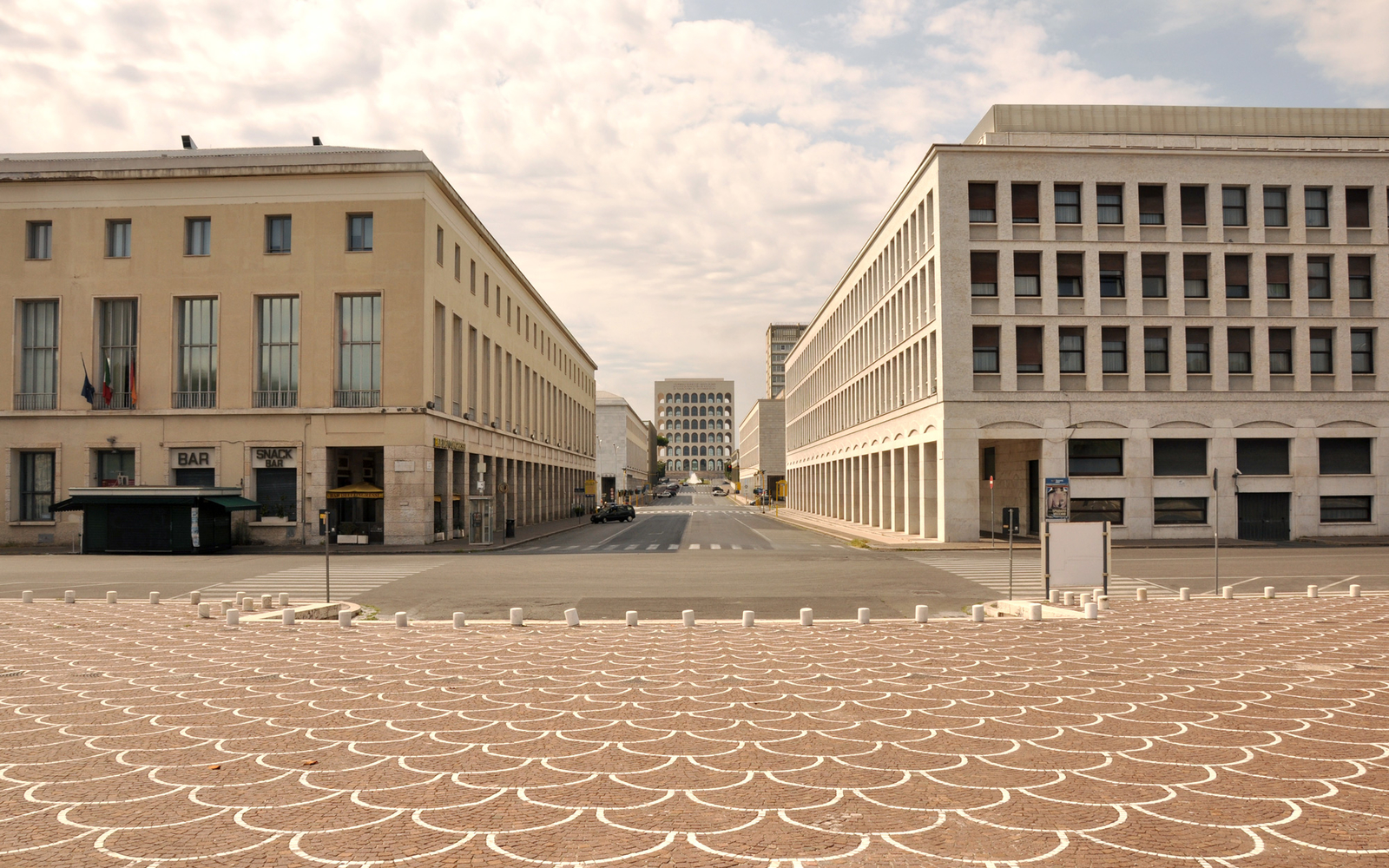
Out-of-the-way gems can still be found in the well-trod city.
For millennia, Rome's streets and piazzas have been walked and then some—the focal point of the ancient empire's transit network, there's a reason we have the saying, "all roads lead to Rome." As the third most visited city in the EU (after Paris and London), it can seem there are few areas left to be discovered, but if you're willing to look up from the map and stretch your comfort zone, a lesser-known, far more modern version of the city appears. From former Olympic athlete housing to a neighborhood devoted to street art, these are five blocks you won't want to miss.
A few tram stops north of Piazza del Popolo, at the corner of Via del Vignola and Via Flaminia, is the street Via Celentano—though its neighbors never call it that. Instead, it's known as Piccola Londra (Little London), a turn-of-the-century, private road that gives off a Notting Hill-meets-Mary-Poppins vibe. Stop by this stretch to see the colorful, immaculate homes and to marvel at how this haven ever came about.
In the city's northeast Trieste neighborhood, there is an early-1900s enclave called the Quartiere Coppedè of whimsical architecture by Florentine architect Gino Coppedè. Marble and metal ornaments like spiders, sea horses, and lizards decorate rustic Craftsman-style houses and buildings, which are painted with modern frescoes and beautiful patterns. It looks like a page from a fairy tale.
The EUR neighborhood, a fifteen-minute drive southwest of the city center, may be well-known but it hardly gets the foot and photo traffic it deserves. Originally designed for the 1942 World Exposition by architect Marcello Piacentini in the late 1930s and finished in the early 1950s, its is a snapshot of a would-have-been Rome, with monumental travertine buildings, palaces, and piazzas of Rationalist architecture. Be on the lookout for the Square Colosseum, a stark white minimalist nod to its 2,000-year-old counterpart.
Built as prototype athlete housing for the 1960 Olympics in Rome, the Villaggio Olimpico (Olympic Village) is one of Rome's planned modern neighborhoods, with duplex stilt building, sweeping piazzas, cinemas, pharmacies, and shops—albeit for temporary use. Now fully residential and permanent, its bare modernist architecture fits right in with the surrounding area, a newly developing cultural and architectural mecca that includes PierLuigi Nervi's Pantheon-like Palazzo dello Sport, Renzo Piano's 21st century, futuristic Auditorium and Zaha Hadid's MAXXI museum.
Probably one of the best places to get lost, if you can find it. The outer limits Quadraro neighborhood (in Rome's southeast periphery), is a micro-state all about street art. Artists including Gary Baseman, Alice Pasquini, Jim Avignon and Diavu have covered its exterior walls to create an open-air museum, and more continue to add to it.
Erica Firpo is based in Rome and writes about Italy for Travel & Leisure. Follower her on Twitter and Instagram.